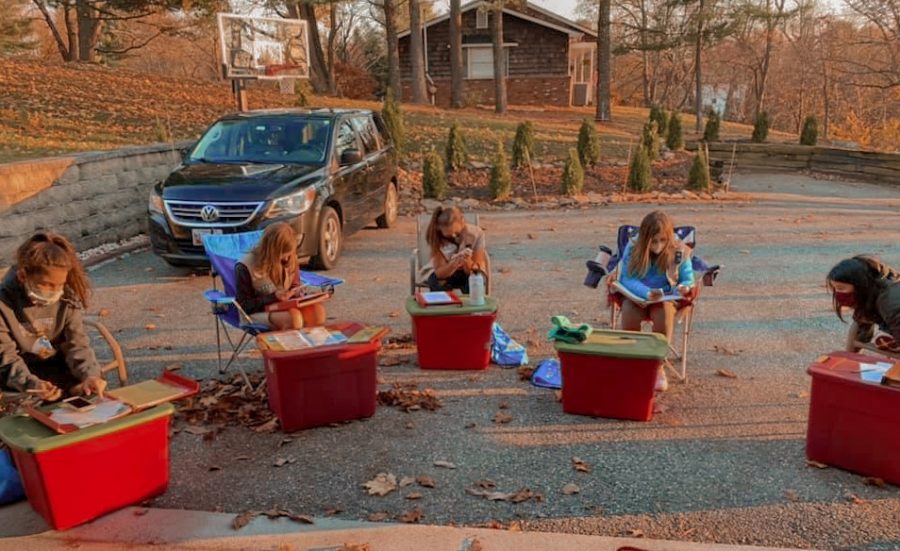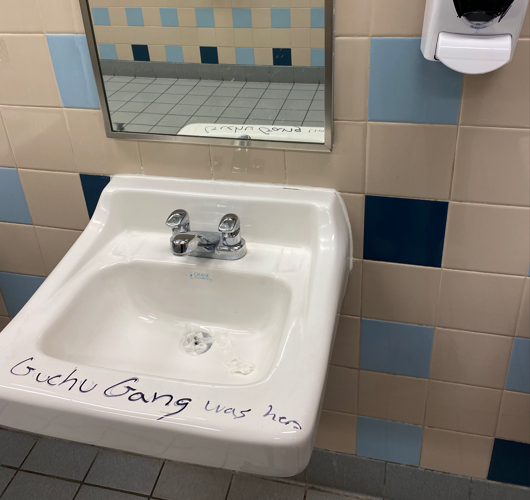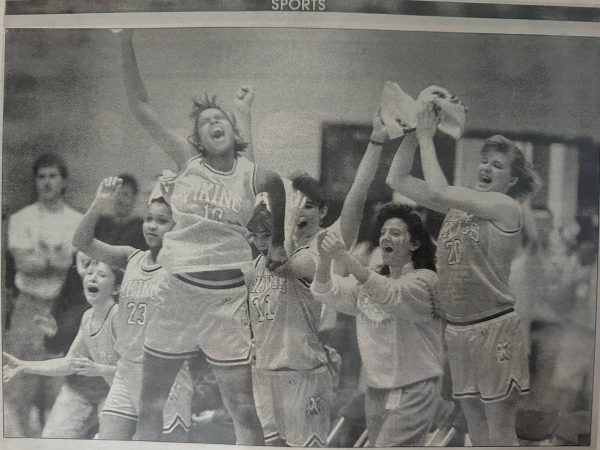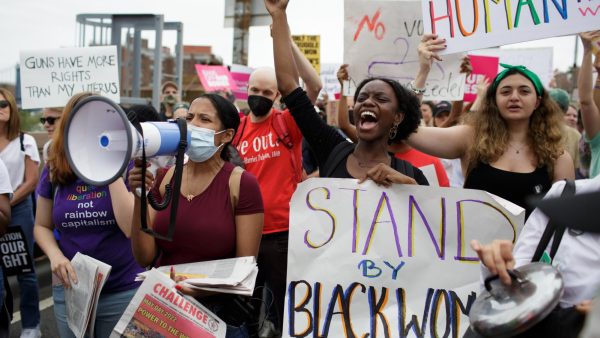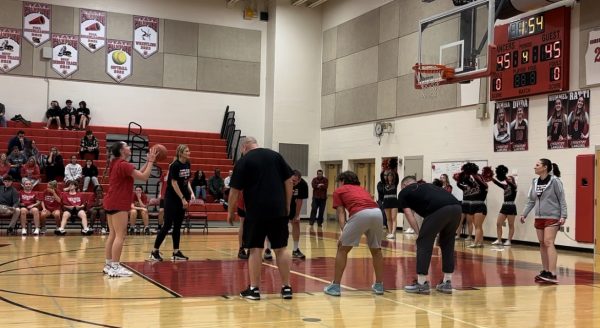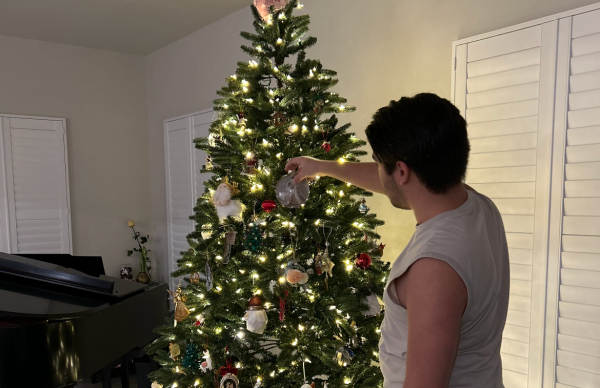Dollars and “sense” during Covid-19: Fundraising amidst a global pandemic
During these hard times, school, community and nonprofit organizations adapt to continue raising funds despite limitations.
Girl Scouts gather together for their planning meeting while following social-distance guidelines.
March 2, 2021
Before Covid-19, fundraising looked like gatherings around big tables with posters and decorations that support a cause. Think about Boy Scouts selling popcorn at the entrance of a grocery store.
Non-profit organizations would gain support from people in-person through events, going door-to-door, and sending direct mail and email campaigns that were planned out months in advance.
However, the current global pandemic has had an immense impact on society–and non-profits, who survive on donations, are struggling to continue to meet their needs. Big events are cancelled. Contact is more limited. Travel is not recommended.
With all of these changes, nonprofits have had to adapt their fundraising strategies to deal with the strict guidelines of the pandemic.
Linganore Fundraising
Local nonprofits have had to get creative to find ways to drive involvement and raise funds. The Linganore SGA, for example, took action by changing their promotion plans to work around schools being virtual and in-person events being cancelled.
Some folks are giving a little more because they are able to and realize the high needs. Those increases have helped to offset the loss of some who no longer could participate due to their own situation.
— Jeremy Brown
These efforts included asking students to drop off food items for a Canned Food Drive while visiting the school to drop off and pick up materials for the semester change, selling Covid shirts to raise funds for the cancelled Making Strides Cancer Walk, hosting the 2020 Quentin Ingram Egg Nog Jog as a virtual challenge this year, and more.
“We have had a heavier influence on community service needs, like food and clothing and helping local families and groups,” said Brown. “People have responded well to our service projects this year so far.”
Community Fundraising
Another community non-profit organization that had to change plans is the Girl Scouts of Central Maryland. Cookie booths are the main source of income for donations. Jill Zolteck, a local troop leader in Frederick County, has reflected on some of the biggest challenges and setbacks that their troop has had with fundraising during these past months.
Prior to Covid-19, Girl Scouts were able to go door-to-door and set up booths as a way to sell cookies. But now, Girl Scout rules on cookie booths, with keeping in mind the safety measures involved, has made selling cookies harder.
“We haven’t done a lot of fundraising because of the strict guidelines and risks involved,” said Zolteck. “We haven’t done any of our cookie booths, and we haven’t planned any other events that we may have done because of Covid-19. As far as the cookie booths, some stores say okay to letting us set up booths, but with state, local, and Girl Scout rules, there are too many risks involved.”
Throughout the pandemic, the strict guidelines set in place regarding social distancing and traveling have also been major obstacles on most organizations’ chances to promote fundraising to new groups and people.
Non-Profit Fundraising
Cindy Kilgore, Executive Creative Director at the Concord Direct fundraising agency, has also observed the difficulty in planning fundraising efforts throughout the year during the pandemic for all of their nonprofit clients. Concord Direct is a marketing company that works with nonprofits on their direct mail and digital fundraising campaigns and improves their program results.
“Fundraising during COVID-19 has been challenging because the messaging is always changing! Initially, our teams had to make many last-minute changes to ensure our campaigns were relevant to what was happening, and it kept changing,” said Kilgore. “Even today, one year later, it remains somewhat difficult to plan too far into the future. It has been a year like no other, and that meant we always had to figure things out as we go.”
The restrictions on fundraising have even impacted the work of some non-profit organizations as well. No Kid Hungry is one of the organizations that was forced to adjust quickly. Before Covid-19, many students relied on school meals for food, but when schools went to virtual learning, they had to find a way to adjust and solve the issue of getting meals to kids who need them.
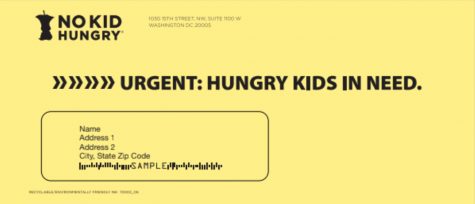
“For instance, when schools closed, No Kid Hungry programs were unable to distribute food to children,” said Kilgore. “No Kid Hungry had to shift to giving out grants to school districts so they could innovate ways to get food out to kids. Child hunger has gone from one in seven to one in four during the pandemic, and that’s a big increase, so the urgency to adjust quickly was very high.”
The ability to both adjust plans and strategies quickly and work with new issues is crucial to successful fundraising. By making the efforts relevant to what was going on in the world and safe with restrictions, some level of fundraising was able to happen successfully, bringing much-needed support to communities.
This year caused many plans to change unexpectedly, but people have learned how to respond and adjust to the new normal. Certainly, next year will be different too and there is no way to tell what lies ahead, but it helps to know that people can face new challenges, find a way to adapt, and create a positive outcome.


